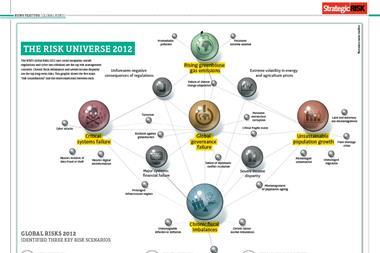A fascinating London lecturer inspired me to think differently about communicating risk and uncertainty. Changing the imagery of risk could be a powerful tool to alter peoples’ behaviour
Ever heard of a micromort? Me neither. Apparently it’s a term used to denote the one-in-a-million chance that you will die from non-natural causes today or the next day.
Fifty people die of non-natural causes every day in this country, things like car crashes or skiing accidents but not diseases like cancer. A micromort is a term used to compare such risks.
I learnt all this from David Spiegelhalter, Professor of the Public Understanding of Risk at the University of Cambridge and a Government advisor on the subject, who was giving a lecture on risk in London this morning (December 7). He’s interested in communicating about risk in new and interesting ways to improve the public’s understanding of it.
As far as Spiegelhalter is concerned any risk communication has to be done in terms of metaphor and analogy (hence the micromort idea cited above). That way we can get our heads round it more easily and it makes more sense to us. After all, the risk doesn’t actually exist, he says, it’s just our best guess based on a sample of the available data (which is usually not the whole picture).
Communicating about risk in new and interesting ways improves the public’s understanding of it
Like the American economist Frank Knight, who literally wrote the book on risk and uncertainty, he makes a distinction between risk (which is quantifiable) and uncertainty (which is not susceptible to measurement) and acknowledges that there are plenty of “unknown unknowns” (in the Donald Rumsfeld sense), for which resiliency is the only response.
How we communicate about risk is obviously crucial to our understanding of it and defines the way we approach it. Spiegelhalter, who was speaking at an event arranged by the Institute of Risk Management (IRM), used the example of two different ways of describing a risk that technically mean the same thing but have very different connotations.
“Climate change is unlikely to be greater than two degrees Celsius over the next 50 years,” is one way of describing the threat posed by global warming, which doesn’t sound too alarming.
“Climate change could be as great as two degrees Celsius over the next 50 years,” means the same thing but has a much more negative ring to it (and is a phrasing more popular with journalists and the media, who are sometimes blamed for selling papers based on fear).
In this way Spiegelhalter urged risk managers to think about the different ways of communicating the same message if they want to influence peoples’ behaviour towards it.
Two cigarettes will cost you one microlife, or thirty minutes off your life
Another term that he coined to help communicate about chronic diseases is “microlife”, meaning 30 minutes off a persons’ life expectancy. To me, it seems like a helpful means of understanding threats to your life. For example, two cigarettes will cost you one microlife, says Spiegelhalter, or, everyday you are 5kg overweight will also cost the same, just like drinking seven units of alcohol will. Spend a night in a hospital in the UK and that’ll cost you a staggering 75 micromorts.
Apart from, on a personal level, making me think deeply about some of my own life choices, Spiegelhalter’s lecture inspired me to think differently about the way risk is communicated. Risk managers reading this may want to consider how they can practically use methods such as these to improve the way people in their organisations understand risk.




















No comments yet